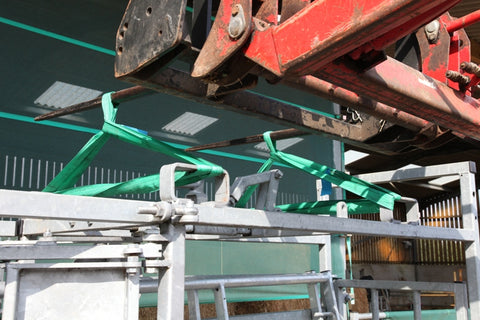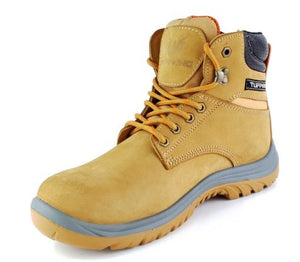Load Capacity and Terminology for Lifting Equipment

Load capacity refers to the maximum demand, stress, force or load that may be placed on a given system under normal or otherwise specified conditions for an extended period of time. In other words, it refers to the capacity of a system to continue to perform its intended function when supporting a specific amount of weight.
In occupational settings, load capacity usually pertains specifically to the maximum demand, stress, or load that can safely be placed upon a system without causing it to fail.
The lifting equipment manufacturer is responsible for determining and the specification of the load capacity of the piece of equipment.

Load Capacity Terminology
There are many terms to keep track of within lifting, and it is important to know what they mean to make a safe choice of lifting equipment. We explain here the difference between some of the terms.
WLL - Working Load Limit
The Working Load Limit is specified by the manufacturer of the product. This means that it is the Maximum load that the non-fixed lifting attachment is designed to lift under the conditions specified by the manufacturer.
SWL - Safe Working Load
The Safe Working Load corresponds to WLL for all lifting equipment under the crane hook, such as hooks, shackles and other lifting equipment. For cranes, hoists and winches, the term "Capacity" is used. The capacity is usually affected by the weight of the lifting beam or lifting equipment assembled under the crane hook.
NOTE: SWL has now been replaced by WLL for all lifting equipment under the crane hook. The term is still, however, used in the offshore/marine industry.
MBL - Minimum Breaking Load
Minimum Breaking Load or "minimum breaking strength/force" (MBF) indicates the load or force that must be achieved before the lifting equipment risks breaking or undergoing a change that causes the load to loosen.
SF - Safety factor
Safety factor is a term that indicates a ratio between WLL and MBL, i.e., how much stronger the equipment is compared to what it is designed to lift. The safety factor is specified in the standard for each lifting range and is usually between 4:1 and 7:1.
WLL - Calculation
The WLL is calculated by dividing MBL by a safety factor (SF). An example of this would be a lifting chain that has a MBL of 5,000 Kg would have a WLL or SWL of 1,000Kg if a safety factor of 5 (5:1, 5 to 1, or 1/5) is used. Note: The WLL stated applies to straight lifting in one part.
USER NOTE: When assembling multiple lifting components for a lifting operation, it is important to remember that it is the component with the lowest WLL that determines the WLL of the total lifting operation.
Manufacturer Specification
The manufacturer is responsible for the specification of the load capacity, MBL, SF, WLL (SWL), for the lifting equipment, accessories and tools manufactured.
The manufacturer / supplier of lifting gear products will supply Certificates of Conformity, which clearly state the MBL, SF and WLL (SWL).
The WLL or SWL is marked on the lifting equipment/accessories by the manufacturer.
- polyester slings – shown on the sewn-in label
- wire rope slings – stamped on the ferrule
- chains (single or multiple leg) – stamped on the chain tag
- snatch & pulley blocks – stamped on the plate
For more information take a look at our blog Lifting Accessories - Markings and Certification
Contact us if you could do with some more explanation. We’re always happy to help!
- Cardno Sales Team






